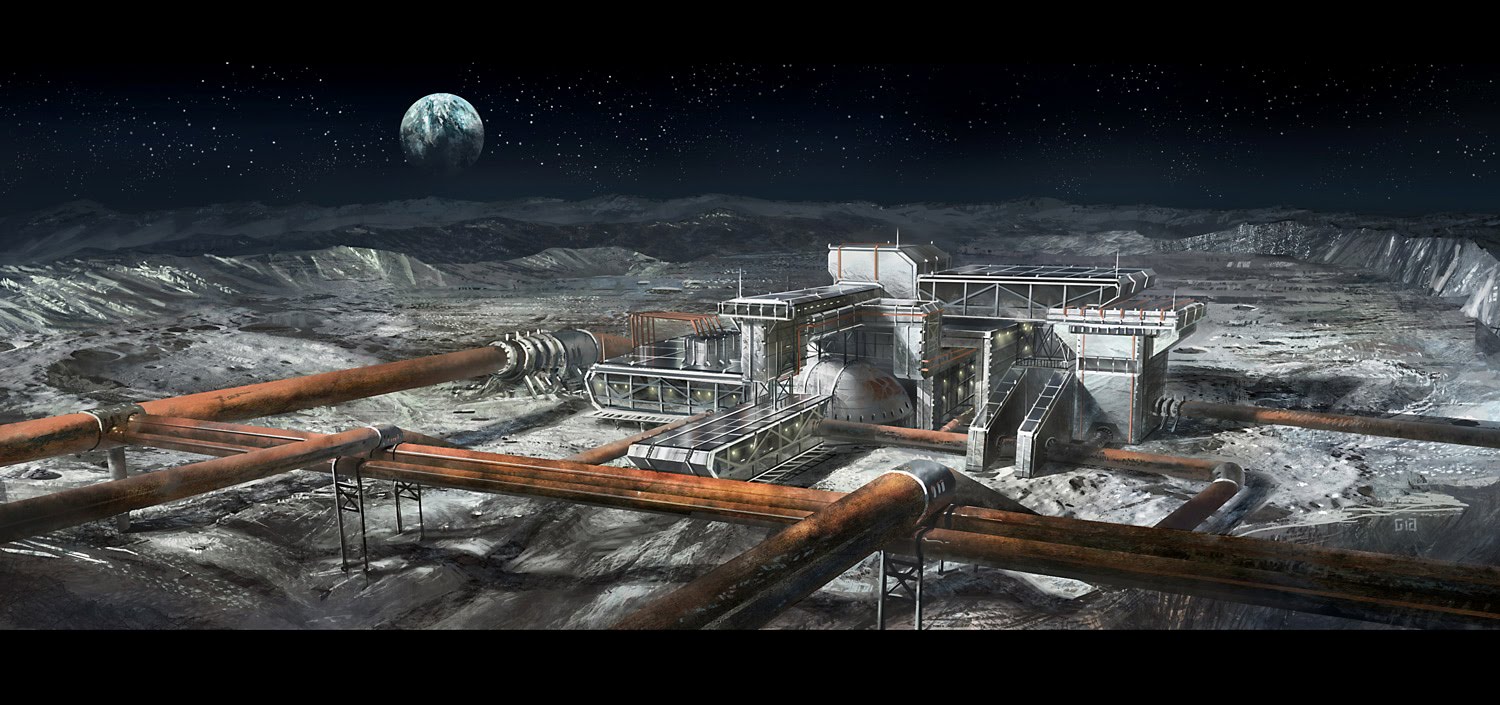How |
Power
Payloads to the moon are extremely expensive, so our first priority would be to make the moon base as self sustaining as possible with room for expansion. Expansion would require power and our options for power are solar panels and reactors. Solar panels are much better on the moon than on the earth. The moon’s day is longer and there isn’t an atmosphere to reduce the power. I favor an initial reactor to be shipped with the rest of the initial base that would use the power to manufacture solar panels. This is because uranium isn’t very plentiful on the moon, but reactors have such a high power output for their mass. If we had fusion by then, a Helium 3 reactor would be plausible. There are places near the poles that get nearly perpetual sunlight, reducing the need for batteries and making our base simpler.
Mining

A base requires materials and it is not reasonable to ship everything up. We would need to ship some form of mining device to harvest the raw materials. The moon is most plentiful in oxygen, silicon, iron, calcium, aluminium, and magnesium. We would never mine those resources for exporting to earth. Rather, if the infrastructure is in place, the moon is a much better source of raw materials than the earth since you don’t have to lift them through miles of air and stronger gravity. Sulfur concrete could be made inexpensively and wouldn’t require precious water to cure. It would be the main building block for our base.
Manufacturing
Manufacturing equipment could be much lighter than on earth because of the moon’s gravity. The first things you would want to make would be mining devices to speed up production. After that you would make the things you need for a power grid, including solar panels. You might also make robots that are remotely operated by humans on earth for general maintenance tasks. The last thing to produce would be rockets since they don’t offer much for base expansion and self sufficiency. Heat shields are heavy so a rocket could launch off earth without one and then one made on the moon could be attached.
Water
Water is essential for people, refinement, and agriculture. Rockets can make do without water. There are plenty of oxides; as an alternative, lithium or magnesium with oxygen is a decent rocket fuel. Some water has been found near the poles. With the extra sunlight, a moon base would likely be near the poles, perhaps next to an ore or water deposit.
Food
People aren’t completely necessary for a moon base. They are costly in terms of food, water and power. Moreover, many human-like tasks could be controlled by humans on earth through the use of robots. For places like Mars, however, where the time lag is much larger, it may be better to have humans. We wouldn’t want to ship food from earth where payloads are expensive so that makes growing food on the moon a better option even if no humans are permanently on the moon. A rocket going to Mars could stop by the moon for food and fuel. Plants wouldn’t do very well in a glass enclosure with access to sunlight. There is much more radiation without an atmosphere and the day-night cycle is much longer than on earth. Likely, solar panels would power lights for consistent filtered light. Plants also can be used to recycle water and air, reducing power needs.
Location
A moon base would likely be located near the poles for the near-perpetual sunlight and the water. Micrometeorites are a serious concern and making room underground for a base would be costly. There are lava tubes on the moon that are quite large. They would not only prevent micrometeorites but would also provide some radiation protection.




